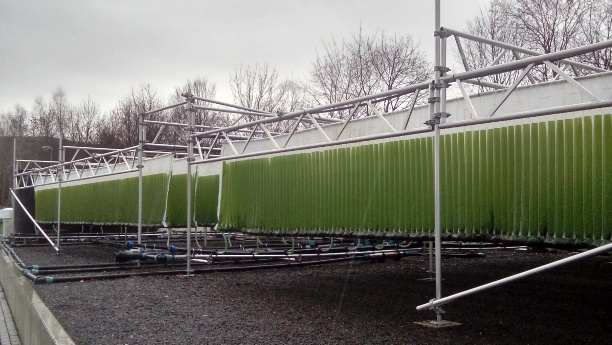 23.08.2016
|
Science
23.08.2016
|
Science
Cleaning wastewater with algae
Researchers from the wastewater treatment plant at the municipal utility in Rotenburg an der Fulda have proven that algae can also purifies wastewater.
more 17.08.2016
|
Business
17.08.2016
|
Business
Fresh capital for wood BBQs
After the successful completion of another crowdfunding round, German start-up GloW efficiency off-grid GmbH is now offering its microwood gasification stove to the local barbequing market.
more 09.08.2016
|
Science
09.08.2016
|
Science
Dirt and water blockers from fungi proteins
With the help of water-repellent proteins that occur naturally in the cell walls of fungi, textile researchers want to develop natural dirt and water blockers for clothes.
more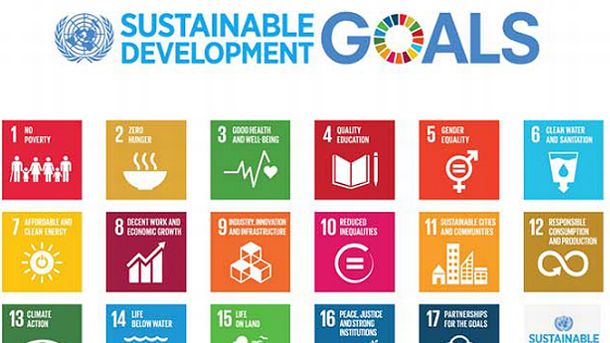 03.08.2016
|
Politics
03.08.2016
|
Politics
Nature commentary: Bioeconomy important for SDGs
In a commentary in the science journal Nature, experts explain the key points on how to harmonise biobased economies and UN sustainability goals.
more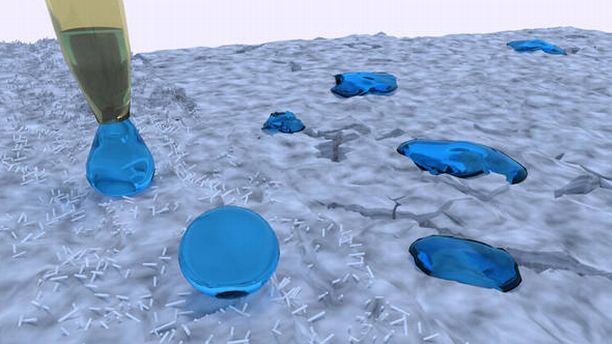 01.08.2016
|
Science
01.08.2016
|
Science
Water-resistant mortar thanks to a biofilm
Moisture can destroy mortar over time, for example, when cracks form as a result of frost. But by adding a biofilm – a soft, moist substance produced by bacteria, when the mortar is being mixed, a team of scientists at the Technical University of Munich (TUM) have discovered an unusual way to protect mortar from moisture.
morePeople
 Dagmar Köhler-Repp: Patron-goddess of poultry
Dagmar Köhler-Repp: Patron-goddess of poultry
After completing her biology studies in 2001, Dagmar Köhler-Repp set out as an independent businesswoman, albeit from the basement of her parents' apartment in Berlin. Today, the head of the veterinary vaccine company Ripac Labor, which now resides in Science Park Potsdam-Golm, has been named Brandenburg Entrepreneur of the Year 2014.
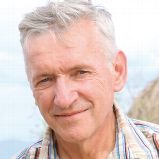 Yuri Gleba: Using plants as molecule factories
Yuri Gleba: Using plants as molecule factories
The plant molecular biologist Yuri Gleba is the head and founder of the company Nomad Biosciences. Today, subsidiary company Icon Genetics is making headlines with its Ebola serum ZMapp. The motto of the chess lover: “Entrepreneurs should be able to think like a Grand Master.”
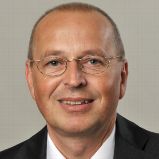 Klaus Jandt: From blood protein to high-tech material
Klaus Jandt: From blood protein to high-tech material
In Jena, the materials scientist Klaus Jandt is conducting research into new nanomaterials that are made using natural substances. The biophysicist is putting the protein molecule fibrinogen to work as a construction material for a new high-tech fibre.
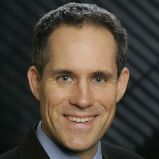 Stefan Schiller: Interior designer of cell factories
Stefan Schiller: Interior designer of cell factories
Equipping cell factories with new reaction chambers: this synthetic-biological vision is the goal of Freiburg-based chemist and cell engineer Stefan Schiller. The scientist recently won the BMBF’s highly endowed Next Generation of Biotechnological Processes research award for 2014.
 Ulrich Bogdahn: In pursuit of a treatment for ALS
Ulrich Bogdahn: In pursuit of a treatment for ALS
Ulrich Bogdahn is working to make neurodegenerative diseases more treatable. The neurologist from Regensburg is conducting researching into an effective therapy for the previously incurable nerve disease amyotrophic lateral sclerosis (ALS).
 Emmanuelle Charpentier: Cutting a swathe with her gene-scissors
Emmanuelle Charpentier: Cutting a swathe with her gene-scissors
Emmanuelle Charpentier studios bacterial anti-viral defence systems. In the course of her work she has discovered a form of highly accurate gene-scissors that have been greeted with excitement by molecular biologists all over the world. The Humboldt professor now works at the Helmholtz Centre for Infection Research in Braunschweig.
 Ulrich Rabausch: A microbiologist with entrepreneurial vision
Ulrich Rabausch: A microbiologist with entrepreneurial vision
Three steps to success: Turn up at the Federal Ministry of Research Innovation Academy Biotechnology with a good business idea, find some partners, become an entrepreneur. While this may sound a bit simplistic, it is exactly what happened to Hamburg-based microbiologist Ulrich Rabausch.
 Nicole Dubilier: searching for synergy in the ocean
Nicole Dubilier: searching for synergy in the ocean
As often as she can, Leibniz Award winner Nicole Dubilier journeys to the sea, where she explores the fascinating coexistence of microbes with other sea creatures.
 Silvia Wojczewski: Bespoke molecules for medicine
Silvia Wojczewski: Bespoke molecules for medicine
Silvia Wojczewski is the executive director of the Frankfurt-based company BioSpring, which produces customised DNA or RNA molecules for use in medicines.
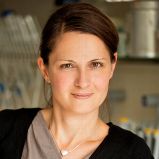 Shirley Knauer: Seeking magic bullets for cancer
Shirley Knauer: Seeking magic bullets for cancer
Shirley Knauer is a junior professor at the University of Duisburg-Essen. She has won numerous awards for her research into the protein molecules involved in carcinogenesis.
 Ralf Dreher: Foodstuffs in the spotlight
Ralf Dreher: Foodstuffs in the spotlight
Ralf Dreher has been boss of the biotech company R-Biopharm for over 20 years. The Darmstadt-based company is specialised in the development of tests for clinical diagnostics and for the analysis of food and feed.
 Jörg Riesmeier: From funds to firms
Jörg Riesmeier: From funds to firms
Plant biotechnologist, fund manager and now company head. In the world of applied biosciences, Jörg Riesmeier certainly gets around a lot. In recent years he has been responsible for putting industrial biotech company Direvo IBT on a new course.
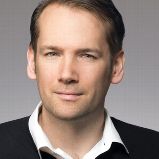 Valentin Kahl: Cells meet plastics
Valentin Kahl: Cells meet plastics
Physicist Valentin Kahl has won the Innovation Award for German Industry for the work carried out by his biotechnology company ibidi. Among the products from the Martinsried-based company are cell culture vessels made using high-tech plastics, as well as novel biochips
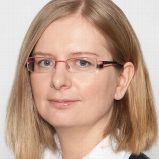 Kerstin Kaufmann: The molecular conductors of the blossom world
Kerstin Kaufmann: The molecular conductors of the blossom world
Since childhood, Kerstin Kaufmann has been fascinated in the diversity of flowers. At the University of Potsdam, she studies the interplay of important regulators in the development of flowers.
 Holger Eickhoff: the biochip man
Holger Eickhoff: the biochip man
Holger Eickhoff is the managing director of the Berlin firm Scienion. Today, the former competitive swimmer is occupied with miniature quantities of liquids. His company Scienion builds devices that create biochips.
 Martin Seifert: Looking over the sea of genomic data
Martin Seifert: Looking over the sea of genomic data
Biologist Martin Seifert is the managing director of Munich-based Genomatix GmbH, which develops IT solutions for the analysis of genomic data. At this time, Seifert has the world of personalised medicine firmly in his sights.
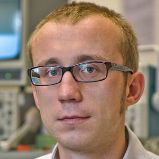 Falk Harnisch: The electrified biotechnologist
Falk Harnisch: The electrified biotechnologist
The biochemist Falk Harnisch has made it his mission to produce industrial chemicals using current-carrying bacteria. Aided by a BMBF Research Award, he is building up his own working group in Leipzig.
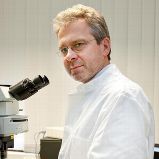 Reinhold Förster: Tracker of the immune system
Reinhold Förster: Tracker of the immune system
Reinhold Förster is studying the migration movements of immune cells using the latest techniques in microscopy. The European Research Council ERC is funding his research into cellular activity in the lymph nodes with a seven-figure-euro sum.
 Thorsten Eggert: The enzyme optimiser
Thorsten Eggert: The enzyme optimiser
“Just doing research” was not enough for the successful microbiologist. Finding no industrial partner for his optimised enzymes, he took matters into his own hands and founded the Düsseldorf-based company Evocatal, which specialises in the biotechnological production of fine chemicals.
 Jürgen Seibel: The sugar exposes the tumour
Jürgen Seibel: The sugar exposes the tumour
Jürgen Seibel’s award for sugar research came somewhat out of the blue. He will now be using his prize money to investigate the sugar molecules on cancer cells – a possible approach for combating tumours.
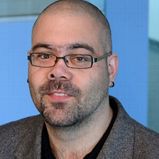 Jochen Guck: An outsider’s path to the central nervous system
Jochen Guck: An outsider’s path to the central nervous system
An adaptable outsider: In the course of his career, the physicist Jochen Guck has brought a number of startling discoveries to the world of biotechnology. With a Humboldt Professorship in the bag, he now conducts research at the Technical University of Dresden.
 Ingrid Herr: Enlightened approach to cancer prevention
Ingrid Herr: Enlightened approach to cancer prevention
Ingrid Herr is researching not only a cure for cancer, bus is also focused on prevention. She discusses her latest research findings in a recently published brochure.
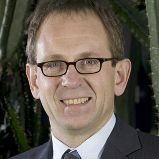 Thomas Drescher: Parallel operations in the cell lab
Thomas Drescher: Parallel operations in the cell lab
Thomas Drescher is one of the founders of the Jülich-based company DASGIP. The bioreactor systems specialists were bought this year by Eppendorf AG – and after Europe and North America is now casting its eye on the Asian markets.
 Anna Dubrovska: A passion for art and cancer genes
Anna Dubrovska: A passion for art and cancer genes
The Ukrainian genetic scientist Anna Dubrovska knows what cancer is like from her own family experience. After research sojourns in Sweden and the USA, she is now a Junior Professor at OncoRay in Dresden, where she conducts research into biomarkers.
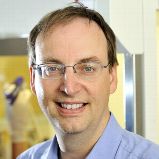 Christian Kurts: The immunologist with a Plan B
Christian Kurts: The immunologist with a Plan B
Christian Kurts gained international recognition as a postdoc after discovering the cross-presentation mechanism of the immune system. The Bonn-based immunologist was recently awarded the Leibniz Prize.
 Nikolaus Rajewsky: making sense of the maths of biology
Nikolaus Rajewsky: making sense of the maths of biology
At the Max Delbrück Center (MDC), Nikolaus Rajewsky is an expert in the creative and productive marriage of systems biology with physics and mathematics. Rajewsky has been awarded the 2012 Leibniz Prize for his work on small RNA molecules.
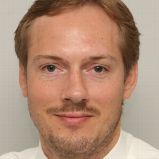 Günter Höglinger: hunting the causes of Parkinson's
Günter Höglinger: hunting the causes of Parkinson's
His scientific curiosity was first awakened by a trip to the cinema. Today, the neurologist Günter Höglinger is dedicated to one of the greatest mysteries of medicine: the causes of Parkinson's disease.
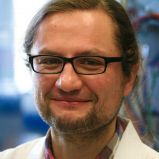 Sven Kerzenmacher: Bioelectricity from blood sugar and sewage sludge
Sven Kerzenmacher: Bioelectricity from blood sugar and sewage sludge
Sven Kerzenmacher researches biofuels at Freiburg's Institute for Microsystem Technology. Whether the electrical current is obtained from glucose or water is all equally interesting for the keen scientist.
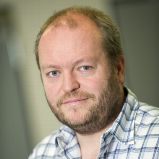 Matthias Kieslinger: Boning up on bone cancer
Matthias Kieslinger: Boning up on bone cancer
Biologist Matthias Kieslinger arrived at cancer research through the analysis of blood stem cells in bone marrow. Running like a thread through the career of the Austrian-born scientist is the early B cell factor (EBF).
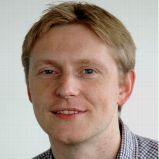 Gunter Meister: RNA in Regensburg
Gunter Meister: RNA in Regensburg
Gunter Meister is investigating whether microRNAs could be used to eliminate dangerous dormant cancer stem cells. The biochemist is a professor at the Institute of Biochemistry, Genetics and Microbiology at the University of Regensburg.
 Cordian Beyer: Hormone cocktail for stroke patients
Cordian Beyer: Hormone cocktail for stroke patients
Cordian Beyer, a researcher at its Institute of Neuroanatomy at the RWTH Aachen is researching a hormone therapy for stroke and multiple sclerosis patients.
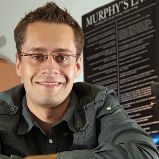 Christoph Kaleta: Making data of bacteria
Christoph Kaleta: Making data of bacteria
Christoph Kaleta’s work is about understanding the metabolic processes that take place in organisms. The just 28 year-old systems biologist in Jena has the big picture in mind.
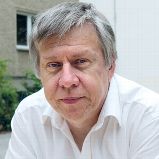 Alexander Knoll: Rabbits in the shower
Alexander Knoll: Rabbits in the shower
Alexander Knoll is the founder of the Berlin-based biotechnology company BioGenes. After a turbulent beginning for his firm in the post-wall era, BioGenes is now on the path towards world market leadership in quality assurance assays.
 Dirk Linke: rubbing shoulders with the enemy
Dirk Linke: rubbing shoulders with the enemy
The proteins in cell walls and membranes run like a red thread through Dirk Linke’s research career. The scientist at the Max Planck Institute for Developmental Biology in Tübingen is investigating structures found on the surfaces of related bacteria. The work is part of a targeted search for new vaccines.
 Axel Ullrich: Cancer pioneer and entrepreneur
Axel Ullrich: Cancer pioneer and entrepreneur
Axel Ullrich is a pioneer in cancer research, as well as the founder of four different biotechnology companies. The research work by the Head of the Department of Molecular Biology at the Max Planck Institute for Biochemistry has resulted in four approved cancer drugs.
 Thomas Eschenhagen: Tinkerer of the heart
Thomas Eschenhagen: Tinkerer of the heart
Thomas Eschenhagen is reconstructing the heart in order to understand it in detail. The heart specialist is also spokesperson for the new German Center for Cardiovascular Research.
 Gülsah Gabriel: closing the door on viruses
Gülsah Gabriel: closing the door on viruses
The molecular biologist Gülsah Gabriel is tracking down of the amazing adaptability of flu viruses. At the Heinrich Pette Institute in Hamburg, she is working on obstructing the pathogens' path in the nuclei of the host cells.
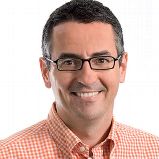 Peter Pohl: Sequencer of the lake
Peter Pohl: Sequencer of the lake
With his penchant for Gustav Mahler, Peter Pohl nearly ended up in cultural management instead of biotechnology. He entered the family business 14 years ago, and today Pohl is President of GATC Biotech AG and an expert on DNA sequencing.
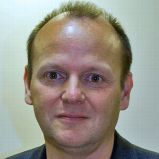 Paul Saftig: Blunting the Alzheimer's scissors
Paul Saftig: Blunting the Alzheimer's scissors
Paul Saftig is a specialist in the development of Alzheimer's. The Director of the Institute of Biochemistry at the University of Kiel has discovered that blocking the causes of the neurodegenerative disease is not straightforwardly possible. This is because many of the Alzheimer's enzymes also have a useful side.
 Gitte Neubauer: Proteome pioneer
Gitte Neubauer: Proteome pioneer
Zusammen mit Kollegen aus dem renommierten molekularbiologischen EMBL-Forschungslabor in Heidelberg wagte Gitte Neubauer im Jahr 2000 mit Cellzome den Sprung ins Unternehmertum. Heute ist die Firma weltweit führend, wenn es um die Bestimmung der Proteine in der Zelle geht.
 Matthias Rögner: Sustainable energy from cyanobacteria
Matthias Rögner: Sustainable energy from cyanobacteria
Wasserstoff könnte in Zukunft zum wichtigen Energieträger werden. Matthias Rögner von der Ruhr-Universität Bochum arbeitet daran, das begehrte Gas von Cyanobakterien produzieren zu lassen.
 Jutta Gärtner: Tracking down dementia in children
Jutta Gärtner: Tracking down dementia in children
Jutta Gärtner sees herself primarily as a doctor, and then as a researcher. The medical professor at the University Hospital Göttingen is searching for the causes of dementia in children and adolescents. Thereby, she frequently encounters conditions that are yet to be given a name.
 Rainer Hedrich: Can plants feel?
Rainer Hedrich: Can plants feel?
Even plants have a form of nervous system. Rainer Hedrich is an expert in ion channels, and thus also in the electrical signal transmission used in plants. He is currently trying to shed light on the unique qualities of the ultra-responsive Venus Fly Trap.
 Heinrich Leonhardt: Deciphering the epigenetic codes
Heinrich Leonhardt: Deciphering the epigenetic codes
Heinrich Leonhardt is one of Germany's best-known experts in the rapidly growing branch of epigenetics. Since 2002, Leonhardt has been conducting studies into the chemical modification of hereditary material at the Ludwig-Maximilians University in Munich.
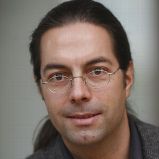 Alexander Gottschalk: Remote controlling nematodes with light
Alexander Gottschalk: Remote controlling nematodes with light
Alexander Gottschalk, Heisenberg Professor at the Goethe University in Frankfurt am Main, is a researcher of the nematode nervous system. Using his expertise in optogenetics, he can use light to switch individual neurons on and off.
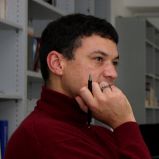 Milton T. Stubbs: Structural biologist with an interdisciplinary passion
Milton T. Stubbs: Structural biologist with an interdisciplinary passion
Milton T. Stubbs conducts research into how the shape of proteins affects their function. The expert in X-ray crystallography is a Professor at the Institute of Biochemistry and Biotechnology at the Martin Luther University Halle-Wittenberg.
 Simon Moroney: Fishing for antibodies with MorphoSys
Simon Moroney: Fishing for antibodies with MorphoSys
Simon E. Moroney was born in New Zealand. This proved no barrier when founding the biotechnology company MorphoSys in Bavaria, and taking it public in 1999.
 Hendrik Dietz: Making tiny components with DNA
Hendrik Dietz: Making tiny components with DNA
Hendrik Dietz nennt es "Basteln und Stricken". Als jüngster Physik-Professor an der Technischen Universität in München will er aus Aminosäuren Stück für Stück maßgeschneiderte Eiweiße bauen.
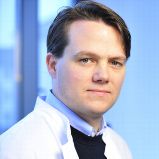 Veit Hornung: How the immune system recognises enemies
Veit Hornung: How the immune system recognises enemies
When it comes to the innate immune system, Veit Hornung is an expert. The Bonn-based researcher is a recent recipient of one of the coveted Starting Grants from the European Research Council, and is planning to establish a company together with his colleagues.
 Stefanie Dimmeler: On the hunt for RNA snippets
Stefanie Dimmeler: On the hunt for RNA snippets
Stefanie Dimmeler is an expert in the small snippets of genetic material known as microRNAs. The Professor of Molecular Cardiology at the University of Frankfurt is primarily interested in the snippets that play a role in cardiovascular disease.
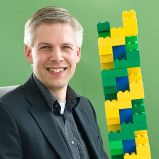 Wilfried Weber Tracking down the signalling pathways
Wilfried Weber Tracking down the signalling pathways
Wilfried Weber has accepted a Freiburg professorship in synthetic biology. His goal is not only to understand the signalling pathways within the cell, but also to reconstruct them. Such work could help create bacteria that are no longer resistant to antibiotics.
 Olaf Kruse: Bioenergy from microalgae
Olaf Kruse: Bioenergy from microalgae
How can energy be extracted from algae? Olaf Kruse has been occupied with this question for many years. Now the Professor of Algal Biotechnology at the University of Bielefeld is looking for ways to make this happen that might be interesting for business.
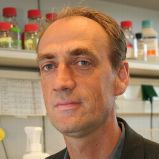 Jens Brüning: Builder of bridges in genetics
Jens Brüning: Builder of bridges in genetics
Jens Brüning has been active in the area of insulin for many years. At the University of Cologne, geneticists are working to uncover the role played by the hormone in obesity or Alzheimer's.
 Horst Lindhofer: Musical cancer fighter
Horst Lindhofer: Musical cancer fighter
Horst Lindhofer reached the top of the charts with his band "United Balls”, before making an unlikely career move into antibody research. He has now developed a cancer drug that utilises the body’s own immune system.
 Holger Zinke: white biotechnology pioneer
Holger Zinke: white biotechnology pioneer
Holger Zinke’s German Environmental Prize is not out of the blue. The biologising of industry, the utilisation of eco-friendly biocatalysts - these were on Zinke’s agenda 15 years ago, even before the phrase white biotechnology had ever passed anyone’s lips.
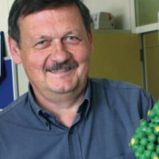 Holger Jeske: Working with the dangerous twins
Holger Jeske: Working with the dangerous twins
When the Gemini virus, also known as the twin virus, strikes, it can pose serious risk to entire harvests. Almost all of the major field crops are susceptible to the disease. A Gemini virus was described for the first time by molecular biologist Holger Jeske.
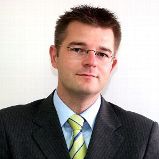 Marc Struhalla: A quicker search for enzymes
Marc Struhalla: A quicker search for enzymes
Five years ago, whilst at the University of Leipzig, Marc Struhalla and his researcher colleague Thomas Greiner-Stöffele were feeling somewhat pressed for time. "For eight weeks, we had been busy looking for specific enzymes, using the normal methods of the day, and without success," recalls Struhalla. This period provided the trigger for their invention. "We were simply not willing to invest a further three months in the search. That is why we consciously began to look for an alternative approach," says Struhalla. And this is exactly what they succeeded in doing: A completely new technique for screening enzymes. Based on this work, the two researchers founded the company c-LEcta, which now employs 24 people. Struhalla: "Our discovery offered us a unique opportunity. It was not something we could turn away from!”
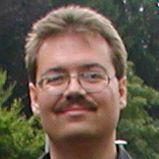 Oliver Ullrich: Illuminating the life of cells in outer space
Oliver Ullrich: Illuminating the life of cells in outer space
What happens to human cells when astronauts leave the Earth's atmosphere is largely a mystery. Researchers have known for a long time that weightlessness affects the immune system - sometimes with fatal consequences. "Technically, we are able to survive in space for months at a time, and it is likely that people will fly to Mars in the first half of this century. But even today, we do not even understand the simplest processes and operations in human cells that are triggered by weightlessness," says Oliver Ullrich. For this reason, the life scientist has dedicated himself to a highly particular field of research: space biotechnology. In October 2007, he became the first professor in this field in Germany.
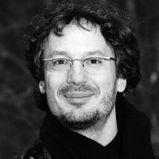 Tobias Hartmann: Arresting Alzheimer's
Tobias Hartmann: Arresting Alzheimer's
Alzheimer's is an insidious disease. The patient inevitably loses their memory, which is followed inevitably by dementia, and then death. But how inevitable is this process really? "I get excited to meet Alzheimer’s patients who could see the progress of the disease halted with our new treatment. This would really be an achievement," says Tobias Hartmann. A few years ago, the biologist revealed how the development of Alzheimer's was related to the lipid metabolism. Today, at the University Hospital of Saarland’s Institute of Neurobiology, he is developing a therapy that he believes could halt the progress of the disease.
 Joachim Hauber: Driving HIV out of its hideaway
Joachim Hauber: Driving HIV out of its hideaway
"This is a special thrill: If we succeed in finding a new treatment for HIV with one of our approaches, then that would be an unbeatable feeling!” Joachim Hauber, a professor at the Heinrich Pette Institute for Experimental Virology and Immunology at the University of Hamburg has dedicated his entire life as a researcher to a single goal: Combating the AIDS pathogen. The biologist holds particular hope for one of his projects, which may yet lead to the development of a new weapon against HIV. He has found a method – at least in the laboratory – of tracking down, detecting and destroying the virus in its favourite hiding place. With financial support from the German Federal Ministry for Education and Research (BMBF), he is now aiming to develop a therapy.
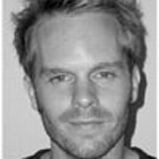 Carsten Mehring: From physicist to expert on brain prostheses
Carsten Mehring: From physicist to expert on brain prostheses
The idea of connecting machines directly to the human brain would seem to many like an idea straight out of science fiction. However, Carsten Mehring at the University of Freiburg is planning to do just this, and it’s no fiction, but cutting-edge science fact. The head of the "Computational Motor Control & Brain-machine Interfaces" working group is hoping to develop a prosthesis that can be controlled from the brain, thereby improving the operating ability for the most disabled patients. The 34-year-old prodigy has already managed to convince the jury from the GO-Bio competition, begun in 2006 by the German Federal Ministry for Education and Research (BMBF), of the potential of this project.
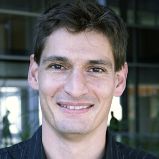 Ulrich Rothbauer: Alpaca antibodies for the pharmaceutical industry
Ulrich Rothbauer: Alpaca antibodies for the pharmaceutical industry
Time permitting, alongside his main work on enzymes that play a key role in gene regulation, Rothbauer also conducted research on a certain kind of small antibody found in alpacas, a South American camelid. Somewhat unexpectedly, the doctoral biologist from the Ludwig Maximilians University of Munich (LMU) succeeded in making a scientific breakthrough with this other work, which was ultimately little more than a side project. Building on the alpaca antibodies, he found a way of using the immune molecules as a detection tool in living cells, a task for which normal antibodies are simply too large. "That was a laboratory highlight for me, especially when you consider the frustration that’s often involved in this line of work," recalls the 37-year-old. "It’s really something special, to be breaking new ground, seeing something that nobody has seen before." Now, the researcher wants to start a company, which will sell the new analysis methods and biomarkers to the pharmaceutical industry. With this idea, he was also able to convince the jury of the GO-Bio Competition from the German Federal Ministry of Education and Research (BMBF). In autumn 2007, it was announced that Rothbauer was one of the nine winners.
 Max Löhning: A strong eye on the immune system memory
Max Löhning: A strong eye on the immune system memory
Max Löhning pursues his goals calmly and in a well thought-out manner. Piece by piece, Löhning is bringing clarity to the bewildering world of the body's immune system. In doing so, the immunologist is delving deep into the cells on a molecular level. Only then will the 38-year-old - currently a professor at the Charité-Universitätsmedizin – be able to answer the burning questions that drive him forward. The most important of these is: How does the human immune system actually remember the pathogens that it has previously encountered? And how can this knowledge be therapeutically applied?
 Ingo Grunwald: Mussel glue and antifreeze lacquer
Ingo Grunwald: Mussel glue and antifreeze lacquer
Even when on holiday, Ingo Grunwald can’t quite let go of his work. Not long ago, the biologist took some time off from the Fraunhofer Institute for Manufacturing Technology and Applied Materials Research (IFAM) to travel to Denmark with his wife and two young sons, where they stayed in a small cottage on the coast. There, whilst walking along the beach, he found some mussels, put them in a bucket and took them home. The mussels then became the presumably unwilling subjects of a series of small tests. "By the end of the holiday, there wasn’t a single implement or object in the cottage that I hadn’t subjected the mussels to," recalls Grunwald half a year later. The end result: When they made their way out of the shells, the mussels were able to stick firmly to everything they came into contact with. "It’s amazing," says Grunwald, "the mussels were not to be budged, even from a brand new Teflon pan. No known glue can stick to Teflon whilst in saltwater.”
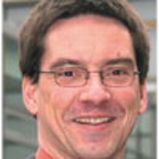 Michael Weyand: Between the laboratory and the business plan
Michael Weyand: Between the laboratory and the business plan
Researching during the day, developing financial plans in the evening – Dr. Michael Weyand from the Chemical Genomics Centre Dortmund can’t complain about a lack of variety. Together with three colleagues, the chemist is taking a path from the laboratory into the business world. The business idea - a new kind of pesticide – has got not only many scientists convinced but also the juries of a number of founder competitions. In 2006, the GO-Bio prize from the German Federal Ministry of Research and Education (BMBF) was added to his list of honours. This means that his idea could soon become a reality.
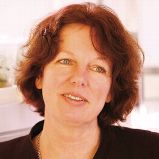 Inge Broer: Keeping a cool head on dangerous terrain
Inge Broer: Keeping a cool head on dangerous terrain
Every day in her work, Inge Broer has to walk through a topical minefield. Broer was one of the first scientists to work with genetically modified plants – a controversial area of research that occasionally comes under concerted attack from passionate opponents. In this field, you need to keep a cool head above all. Indeed, the Professor in the Department of Agricultural and Environmental Science at Rostock University refuses to resort to polemics. What ultimately counts for Broer is the scientific justification, no matter if it weighs for or against genetic engineering.
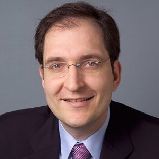 Peter Seeberger: Sweet attack on malaria
Peter Seeberger: Sweet attack on malaria
When Peter Seeberger is confronted with a problem, he grapples with it until it’s solved. In this way the 38 year old German has already achieved a great deal. At one time, the graduate of Chemistry aspired to attain a doctorate at the Federal Institute of Technology (ETH) in Zuerich, Switzerland. Now, he holds there the Chair as Professor for Organic Chemistry and is considered an expert in the field of synthetic manufacturing of sugar compounds. With this, Seeberger hopes to make gains in the field of medicine: for example with a vaccine against the tropical disease malaria. Now, Seeberger was honoured for his achievements with the 2007 Körber Prize. The official ceremony for the 750,000-euro award took place on 7 September in Hamburg.
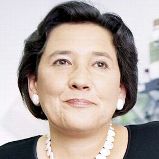 Hannelore Daniel: The energetic designer of nutrition research
Hannelore Daniel: The energetic designer of nutrition research
"I am an Aries – I simply must get my way", says Hannelore Daniel of herself. The Director of the Central Institute for Nutrition Research at the TU Munich has shaped nutrition sciences in Germany more than almost any other scientist. The fact that the discipline has emerged from the sometimes-mocked domestic economy and, in the meantime, is taken just as seriously as molecular biology or genetics can be traced in large part to her pioneering work and assertiveness. Occasionally, she also makes good use of more unorthodox methods: "If I am speaking before consumer protection groups about agrobiotechnology, I eat a gram of DNA, in order to show that genes are not actually harmful perse."
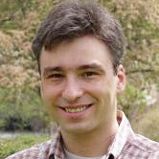 Dietmar Fischer: A far-reaching coincidence
Dietmar Fischer: A far-reaching coincidence
In the beginning, coincidence led the way when the doctorand Dietmar Fischer discovered something quite unbelievable, i.e. that injured nerve cells can regenerate themselves if the lens in the eye has been damaged some time beforehand. This was seven years ago. Since then, Fischer, now Junior Professor at the University Clinic, Ulm, has dedicated his working life to uncovering the mechanism that forms the basis of this process. If this can be achieved, the pharmacist hopes to use the knowledge to develop treatments for various conditions. The animal model has produced many promising results, and in the process, the 35-year-old researcher even managed to discover a new gene.
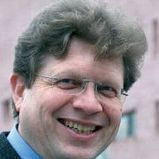 Andreas Radbruch: keeping order amidst chaos of the immune system
Andreas Radbruch: keeping order amidst chaos of the immune system
Andreas Radbruch shares the dream of many immunologists: The Scientific Director of the German Rheumatism Research Centre (DRFZ) in Berlin is hoping to help sufferers of immune-related diseases with therapies which not only treat the symptoms, but actually get to the root of the problem and promise a cure. So far, in view of the complex interaction of the huge variety of cells and signal materials in the body’s immune defence system, such a cure is not yet available. Radbruch is hoping to change this and, piece-by-piece, he is bringing order to this molecular confusion. But the 54-year-old is not only busy in the realm of science: he has also acted as godfather in the establishment of two German biotech companies.
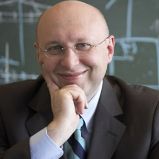 Stefan Hell: Biophysics’ determined lateral thinker
Stefan Hell: Biophysics’ determined lateral thinker
Stefan Hell has always felt perfectly happy to break ranks. The physicist at the Max-Planck Institute for Biophysical Chemistry in Göttingen, Germany, has made a career out of looking where others have not though to look – and in the process repeatedly unearthing highly valuable finds. This ability to think laterally has brought its rewards: In 2002 Hell revealed a new type of optical microscope, with which living cells could be observed with undreamt-of sharpness, and, in doing so, demolished a previously unquestioned physical law. For this work, Hell was presented with the German Future Prize, presented by German Federal President Horst Köhler at a ceremony on 23rd November.
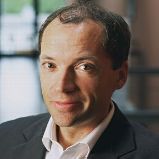 Martin Hrabé de Angelis: Commuting between worlds
Martin Hrabé de Angelis: Commuting between worlds
Martin Hrabé de Angelis is not somebody who is happy occupying a single world. Regardless of what he is doing, whether it’s as a drummer in a jazz band, as a surfer riding the waves or as a biologist in the laboratory - this slight man has a knack for pulling others along with him and inspiring them with his passion. As a scientist, the 41-year old has dedicated himself to the systematic analysis of mouse genes, with the aim of increasing the understanding of human illnesses. In 2001 he achieved a coup: within the framework of the German National Genome Research Network (Nationales Genomforschungsnetz, NGFN), funded by the German Federal Ministry for Education and Research (BMBF), he was able to establish the world’s first mouse clinic at the GSF Research Center for Environment and Health in Neuherberg.
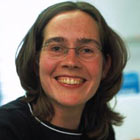 Ute Krämer: Chasing up the mechanisms of herbal metal-eaters
Ute Krämer: Chasing up the mechanisms of herbal metal-eaters
Ute Krämer is not a scientist who had her career planned-out from the outset. Ten years ago in Oxford, England, and somewhat by accident, the biochemist discovered her specialty: Plants that can pull heavy metals from the soil in high concentrations and enrich them in their leaves. Since then, the 36-year-old has contributed crucially to the understanding of the biochemical processes behind these metal-munching plants. Step by step, the natural-sciences researcher has smoothed the way to a means of cleaning metal-contaminated soils in a natural way.
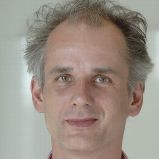 Nikolaus Rajewsky: How a theoretical physicist became a revolutionary
Nikolaus Rajewsky: How a theoretical physicist became a revolutionary
Sparking a revolution is not something that Nikolaus Rajewsky had ever contemplated. Nevertheless, the professor at New York University, is regarded as having begun a revolution in his field in the course of his young career. The 37 year old German develops highly efficiently computer models which analyze molecular activity in the cell nucleus. With the results that the models produce, the bioinformatics expert has turned biology on its head and he is now, among other things, looking for new methods for the treatment of complex diseases. This summer, Rajewsky will be returning to Germany to begin work at the Max Delbrueck Center for Molecular Medicine (MDC) in Berlin.
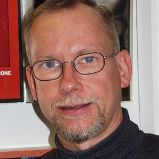 Franz-Ulrich Hartl: Illuminating the role of the chaperone of the proteins
Franz-Ulrich Hartl: Illuminating the role of the chaperone of the proteins
For Franz Ulrich Hartl, butterflies and single-celled organisms were already a subject of great fascination as a child. Hours were spent dissecting these wonders, or examining them under a microscope. Today, Hartl is the director of the Department for Cellular Biochemistry at the Max-Planck Institute for Biochemistry in Martinsried and is an expert in the world of proteins. The 49-year old has breathed life into a fundamental mystery: How the long-chain molecules in the cell, which are essential for the body, actually assemble themselves into their three-dimensional form, in order to become active. Now, he has been distinguished for this discovery with the 2006 Koerber prize, worth 750,000 Euros.
 Ulrike Lindequist: A pharmaceutical view of nature
Ulrike Lindequist: A pharmaceutical view of nature
Ulrike Lindequist doesn’t make a great play of her work as a researcher. However, the Managing Director of the Institute of Pharmacy at the University of Greifswald shouldn’t be modest. The Natural Substances expert has just been involved in bringing a skin cream to the market which protects against multi-resistant bacteria, the active ingredient of which was discovered in seaweed.
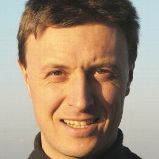 Patrick Cramer: In the molecular depths of the cell nucleus
Patrick Cramer: In the molecular depths of the cell nucleus
The parents of Patrick Cramer couldn’t have foreseen that the birthday present for her young son, a home chemistry set, would be a catalyst for an undreamt-of-career. And yet, two years ago, Cramer became Director of the Gene Center at Ludwig Maximilians University (LMU) in Munich. It’s there that the 37 year old German burrows into the molecular depths of the cell nucleus to uncover the mechanisms behind the construction of proteins.
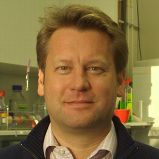 Henning Walczak: the cell’s self-destruction plan laid bare
Henning Walczak: the cell’s self-destruction plan laid bare
It is not often that somebody opts out of a subject at school and then later becomes an expert in the field. There are other respects in which Henning Walczak, a biologist at the German Cancer Research Center (DKFZ) in Heidelberg, is a rather untypical scientist. Unlike many in his field, he sees his research from an entrepreneurial perspective and, with this, knows all about the ebb and flow of the marketplace.
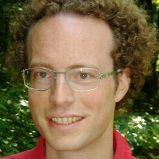 Daniel Gerlich: A biologist without blinkers
Daniel Gerlich: A biologist without blinkers
Daniel Gerlich knows a fair bit about interdisciplinary research. The young scientist at the Institute for Biochemistry at the Swiss Federal Institute of Technology, Zurich (ETH), is primarily a systems biologist, and he’s made it his mission to combine specific methods from biology and computer science. At present, the 33-year old is working to quantify living cell division processes, which are then modeled in the computer. With the results, he hopes to supply cancer researchers with fundamental information about cell behaviour.
Funded-projects

Fungus biochar - nature's fertilizer
German fungus researchers from Tübingen have developed a special substrate of biochar that will help young plants to take root and to sustainably protect against diseases.
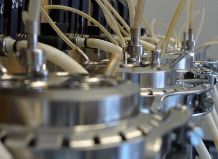
Storing and protecting active compounds with yeasts
The Berlin-based company Organobalance has developed a process that protects compounds such as vitamins, trace elements and fatty acids with a natural casing.

Natural substances to mask bitter tastes
Cough mixtures that taste sweet, but are still healthy - natural sweeteners suche as these are in the focus of the strategic alliance NatLifE 2020.The consortium of 22 partners from industry and academia have received millions of euros from the BMBF.

Helping the pawpaw breakthrough
The fruit tree Asimina triloba has been known for its nutritious fruit for a long time. German plant researchers are now working on propagating the pawpaw in the laboratory to make them fit for the fruit farm.

Lupin ice cream: a sustainable dessert
The answer for all vegan and lactose-intolerant ice cream fans: a special treat is now available in the freezer section in many supermarkets – lupin ice cream. The vegetable protein that the ice cream is based on is produced using a sophisticated technology, which recently won the German Future Prize.

Biological protective sheathing for teeth
Nature is a virtuoso of new biomaterials: Researchers in Mainz have discovered a bio-silicate in marine sponges that is highly suited as a coating for dental and bone implants.
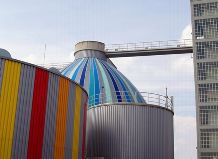
Precious single cell oils born of waste water
Slumbering in industrial waste and sewage is an abundance of untapped carbons. The ‘ZeroCarbonFootprint’ strategic alliance brings together partners from research and industry with the joint aim of unlocking waste as a source of raw materials for innovative products. The star of the show: some extremely useful microorganisms.

Laser-powered turbo PCR
Polymerase chain reaction (PCR) is one of biotechnologists’ most important tools. A new technique can now greatly speed up the molecular copying process.
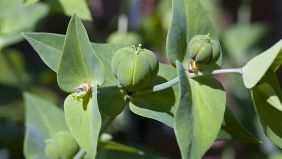
Biofuels: it’s all in the milk
Components from the sap of the caper spurge plant could be an ingredient in future biofuels. And because the plant grows well in poor soils, there would be no competition with food crops.

Polishing up synthetic fibres with enzymes
New detergent enzymes that can nibble away at unwanted fibrous clumps on synthetic textiles – this is one of the goals of the BMBF-funded strategic alliance ‘Functionalisation of Polymers – FuPol’.
Green antibody factories take the fight to cancer and Ebola
The antibody cocktail ZMapp is seen as the great hope in the fight against Ebola. The therapeutic proteins for the medicine are produced in tobacco plants. The green production technology was developed by the Halle-based company Icon Genetics GmbH, with support from the German Federal Ministry of Research.

Real-time quality checks for bioreactors
The central production facility for the field of biotechnology is the bioreactor. In a BMBF-funded strategic alliance, researchers from industry and academia are working on new strategies to make the complex production processes inside these reactors more efficient and sustainable.

Chemical probes to out-sleuth HIV
German researchers are working to further develop fluorescence microscopy in a BMBF-funded collaborative project in the area of photonics. Using chemically controlled probes, they hope to shed an entirely fresh light on HIV.
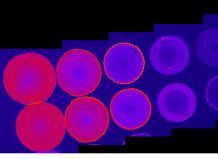
Illuminating foods for gluten
Researchers are working to develop an optical rapid test that is hoped to enable the detection of even the smallest traces of gluten in foods.

Breeding bulls: Genetic test highlights infertility
Veterinarians have demonstrated the existence of a genetic defect in cattle that can cause infertility in otherwise perfectly healthy bulls. A new genetic test is aimed at improving the selection of breeding animals.

Milk sugar for healthy baby foods
With a little help from some special microorganisms, the family-run company Jennewein Biotechnologie manufactures sugar molecules otherwise only naturally found in breast milk. The company is strongly expanding its production capacity as well as seeking European approval for a product hoped to arrive on the market in 2014.

Designer enzymes from exotic building blocks
Nature uses 20 different amino acids as building blocks for proteins. With the assistance of a few molecular biological slights-of-hand, however, it is possible to create significantly higher number of different types of amino acids.
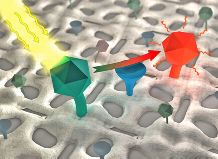
Nano-sensor for pharma-free water
A new kind of nano-sensor concept based on fluorescent bacterial proteins can quickly and easily detect drug- and heavy metal residues in water. German scientists are also part of the scientific team in the joint project Aptasens.
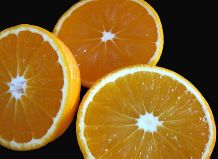
Orange peel for opaque lemonade
Lemonade remains cloudy through the use of special additives. Biotechnologists at the University of East Westphalia-Lippe are working to create the safe effect using the white insides of orange peel.

Understanding the power of corn hybrids
The offspring of crossed species of corn lines are frequently very high-yielding. A German research network is hoping to shed some light on this effect and to accelerate the breeding process.
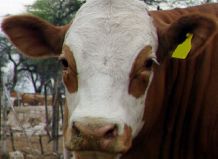
Cattle breeding: Sunglasses for cooler cows
Simmental cows usually have pure white fur on their heads. The animals with brown fur around the eyes are better protected from UV rays and cancer. Geneticists in the research cluster Synbreed have decoded the hereditary pattern of the dark circles around the eyes.
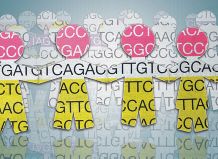
1000 Genomes Project: a molecular world survey
The 1000 Genomes Project has presented its genetic map of the world. To do this, the participating researchers deciphered the genetic makeup of 1,092 individuals, with two German sequencing laboratories making a significant contribution.

Automating biotechnological processes
It currently takes about five to eight years to develop a biotechnological process. In the collaborative project ‘AutoBio’, companies and academic researchers are working towards more fully automated developmental sub-steps to save time and costs.

The virus research into bats
Severe acute respiratory syndrome (SARS) is a zoonotic disease that is transmitted by bats. A joint research project is now examining how the virus is able to jump the species barrier from animals to humans.
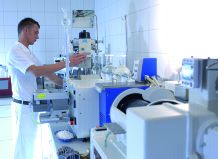
Peak performance through a molecular diet
In the cooperative project P27, researchers at the university of Greifswald are working on the genetic optimisation of Bacillus subtitis, the grass bacillus.
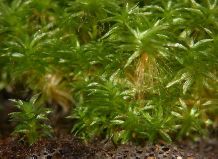
Pulmonary medicine from a moss bioreactor
Researchers at the University of Gießen and the Freiburg company greenovation are developing a therapy for Acute respiratory distress syndrome (ARDS), a serious reaction to lung injuries. The required protein-based drugs are manufactured with the assistance of a moss.
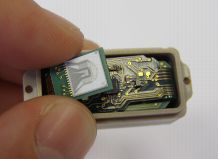
Tumour surveillance by microchip
Cancer needs oxygen in order to spread. A sensor chip currently under development by scientists at the TU Munich is designed to monitor oxygen concentrations in the vicinity of tumours, and warn doctors if a cancer becomes active.

Living medicines from the pharmaceutical forge
Die Münchener Apceth GmbH hat sich auf die Entwicklung von stammzellbasierten Therapien spezialisiert, die bei der Behandlung der arteriellen Verschlusskrankheit zum Einsatz kommen.

Pure biogas from deepwater conditions
Biogas of natural gas quality: At the University of Hohenheim, researchers are simulating the conditions of the deep sea to produce pure and inexpensive biogas.

Testing drugs with light
Some drugs work effectively, but can damage the heart. At the University of Saarland, a group of molecular cell biologists headed by Peter Lipp has developed an optical approach to drug testing. Another original aspect to their work is that instead of using animal experiments, the scientists at CordiLux work with adult myocardial cell cultures.

Pregnancy: Violence leaves epigenetic traces
The children of mothers who have been exposed to domestic violence during pregnancy exhibit a higher genetic predisposition to behavioural problems and mental disorders. This is one conclusion of a BMBF-funded project from scientists in Constance.
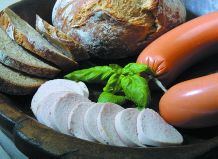
Plant-based liver sausage
First there was ‘Lupinesse’, the ice cream made from pure vegetable ingredients, and now the Fraunhofer researchers are hoping to bring animal fat-free liver sausage and bologna to the supermarket counters.
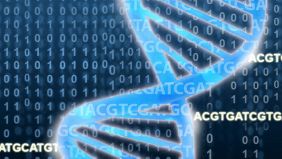
Trisomy 21: pre-birth testing by blood sample
Down's syndrome is the most common genetic disease. Detecting Trisomy 21 in unborn babies routinely necessitates a cell extraction procedure. Now a genetic test has been developed that can make do with only a small blood sample from the mother.
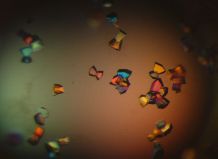
Reaching into the pocket of the kinases
Protein kinases, an important class of enzymes, are associated with both the development of cancer and with diabetes. Researchers in Frankfurt working within the GO-Bio Initiative are now researching ways of controlling the kinases.
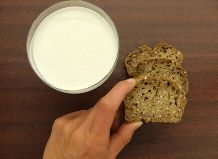
Stable fats for healthier bread
Polyunsaturated fatty acids are beneficial for health, but the health-promoting substances are chemically extremely unstable. A research network is hoping to alter the fatty acids for processing into food additives.

Peptides from the laser printer
Biochips are used to diagnose diseases, test drugs, or search for new cancer therapies. But as useful as they are, the standard production approach is extremely complicated and expensive. Researchers in Heidelberg have thus opted to take an entirely different approach: Printed biochips.
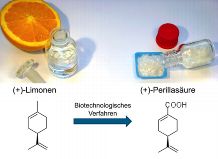
Cosmetics from orange peel
Oranges are not just for orange juice. The skin can also be used as a raw material for a form of natural preservative for cosmetics, a process that researchers are now preparing for industrial application.
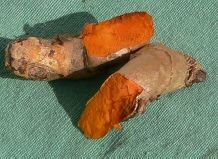
Turmeric spices up drug development
Folk medicine in India has known for centuries of the healing properties of turmeric. A research network headed by scientists in Hohenheim is now hoping to clarify how turmeric can better smuggled to where it could be useful into the body.
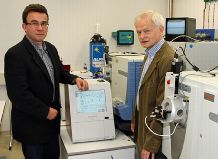
From biomarkers to tailor-made therapies
Medicines do not work equally well for all patients, which is why intensive research is being carried out into tailor-made therapies. A consortium has now been formed in Greifswald that is aimed at advancing the development of individualised therapies.
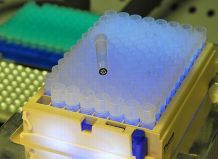
Central register for German biobanks
Many thousands of samples are stored in German biobanks. In most cases to date, researchers have had to search through the many databases one after the other. A national registry is now set to facilitate research work in this area.





